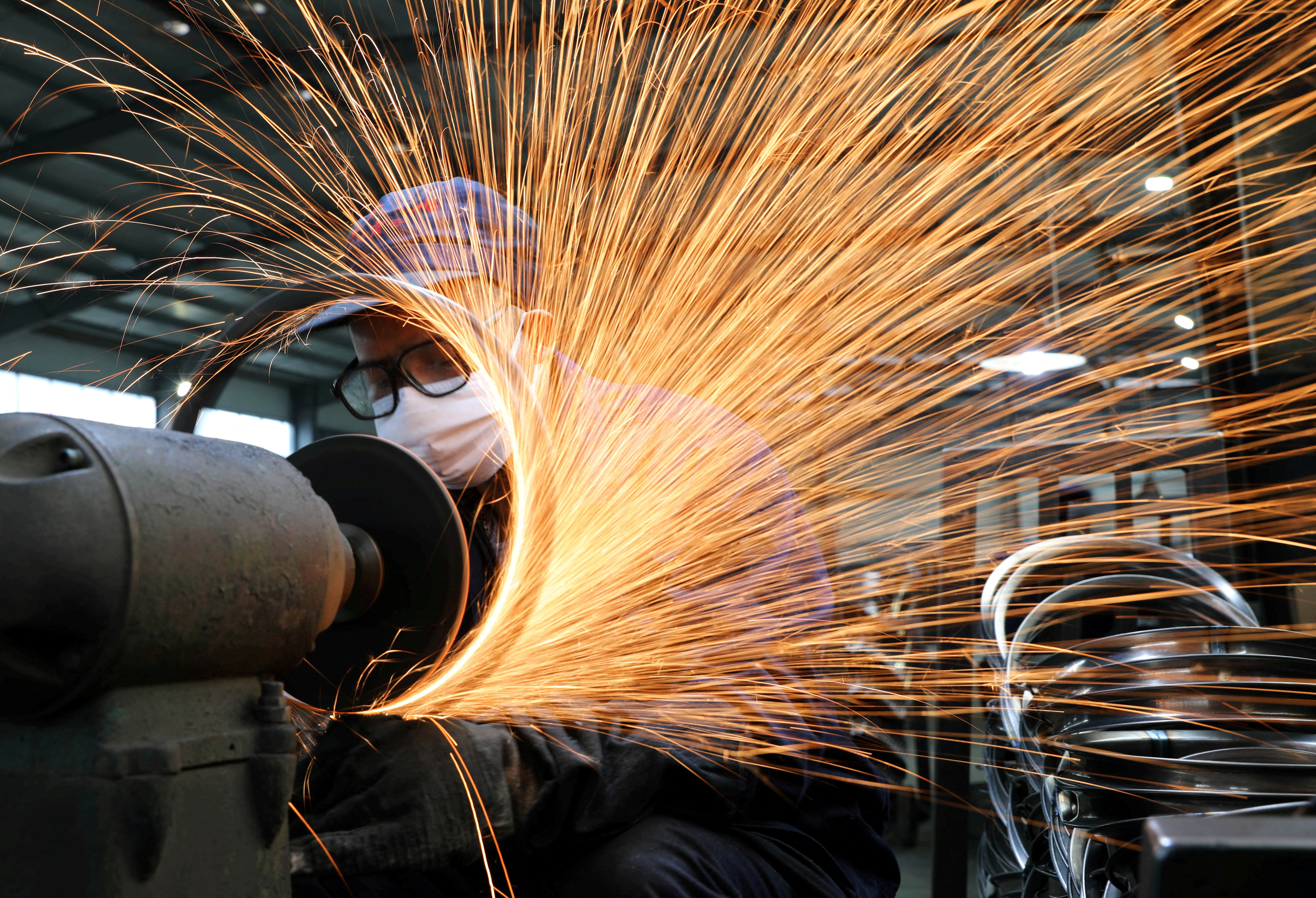pctay123
Publish Date: Tue, 17 Sep 2024, 12:00 PM

LAUNCESTON, Australia, Sept 17 (Reuters) - China's steel and iron ore sectors are in an apparent state of disconnect, with steel output trending weaker but imports of the key raw material remaining firm.
Production of crude steel slumped 6.1% in August from July, dropping to 77.92 million metric tons, according to data released by the National Bureau of Statistics on Saturday.
August's output was the lowest since December and was also down 10.4% from the same month in 2023, while production over the first eight months of the year was 3.3% weaker at 691.41 million tons.
China, which produces just over half of the world's steel, has been struggling to boost demand, especially in the key property construction sector, where a raft of stimulus measures have yet to bear fruit.
The latest disappointing data was new bank lending for August, which rose less than the market expected after it hit a 15-year low in July, while new home prices fell at the fastest pace in more than nine years in August, sliding 5.3% from a year ago.
The sluggish demand for steel has resulted in a greater share of mills recording losses, as they have maintained output even as prices slid.
Benchmark steel rebar contracts in Shanghai dropped to the lowest close since May 2020 on Sept. 9, ending at 3,032 yuan ($427.64) a ton.
The price has since recovered slightly to end at 3,196 yuan a ton last Friday, with no trades on Monday and Tuesday because of public holidays. However, the contract is still down 26% since the start of the year.
With the evident weakness in steel, it's perhaps surprising that imports of iron ore have held up so far in 2024.
China, which buys about 75% of global seaborne volumes, saw imports of 101.39 million tons in August, down 1.4% from July's 102.81 million tons.

STEADY IMPORTS
Monthly iron ore imports have held above 100 million tons for six of the eight months so far this year, and one of the months they dipped below that mark was February, which only had 29 days.
For the first eight months of the year, iron ore imports were 814.95 million tons, a gain of 5.2% from the same period last year.
Given that the iron ore isn't being turned into steel, it follows that it is being used to build inventories.
Stockpiles at ports monitored by consultants SteelHome rose from a seven-year low of 104.9 million tons in late October to a 27-month high of 151.8 million in the week ending July 26.
However, since then they have fallen slightly, ending at 149.4 million tons for the seven days ended Sept. 13.
This implies that the process of rebuilding inventories is largely complete, at least as far as stockpiles at ports are concerned.
There is some scope for steel mills to boost inventories at production plants, especially given the upcoming Golden Week holidays that start on Oct. 1.
Buying iron ore for stockpiling is also being supported by the weaker price trend, with benchmark futures traded on the Singapore Exchange ending at $91.77 a ton on Monday, only slightly above the 22-month low of $91.10 on Sept. 10.
The contract has fallen 36% since its peak so far in 2024 of $143.60 a ton, reached on the second trading day of the year on Jan. 3.
The question for the market is how long can iron ore imports remain resilient in the face of weak steel production, even if the price is low by the standards of the past 18 months?
September iron ore imports may remain above 100 million tons, with commodity analysts Kpler estimating arrivals of about 105 million tons.
But with visible inventories at high levels and steel output mired in the doldrums, the risk is that iron ore imports start to ease.
The opinions expressed here are those of the author, a columnist for Reuters.
Sign up here.
https://www.reuters.com/markets/commodities/chinas-weak-steel-strong-iron-ore-imports-shaped-by-prices-russell-2024-09-17/












